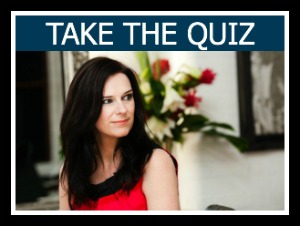The secret of effective lead generation
 How much does it cost to generate a lead is a question that is so often NOT asked. When someone asked me recently, I felt embarrassed to say I didn’t actually know how much it was costing me to generate a lead. Oops! And, I’ve been in business a long time – and sales! I'm used to tracking all costs, including cost of sale, but like I said, I was embarrassed to say I didn’t know what it cost to generate a lead. When I asked my peers though, many of whom work for large global brands in sales and marketing departments (as Directors) they too were unable to answer the question. Quite frankly I was horrified as this really is, in my opinion business basics 101. Why then are so many business owners not tracking this statistic and metric for lead generation?
How much does it cost to generate a lead is a question that is so often NOT asked. When someone asked me recently, I felt embarrassed to say I didn’t actually know how much it was costing me to generate a lead. Oops! And, I’ve been in business a long time – and sales! I'm used to tracking all costs, including cost of sale, but like I said, I was embarrassed to say I didn’t know what it cost to generate a lead. When I asked my peers though, many of whom work for large global brands in sales and marketing departments (as Directors) they too were unable to answer the question. Quite frankly I was horrified as this really is, in my opinion business basics 101. Why then are so many business owners not tracking this statistic and metric for lead generation?
Well one of the reasons could be because many business owners buy in leads or data and are not proactively working to generate a lead. The other reason could be because they already have a database to work from. Despite these possibilities, in my opinion it doesn’t explain why so few are tracking, monitoring and analysing the costs to generate a lead.
These days there are many ways to generate a lead for your business. For example you can use traditional ways such as telemarketing, direct mail, PR, blogging, and trade shows, or go down the social media and online route. Having built businesses and sales teams for 18 years, I know from first hand experience that the costs for these channels have continued to increase year-after-year. And, for starts-up without investment and capital or small creatives these costs are just not fathomable.
In the case of direct mail, the cost for printing and postage continues to increase and because of this so few can actually afford to do it. Whilst email marketing is far from dead, many are still not opened or are binned before being opened. Likewise, telemarketing and PR are time-intensive and sometimes equally expensive processes that can be ineffective if not done strategically. Trade shows have been getting more expensive to participate in for years and when you calculate the cost of travel, elaborate exhibition booths, and branded promotional materials it often works out as a no brainer in terms of not doing it.
What are the best lead generation techniques?
As a result of this, many creative businesses and start-ups have turned to the Internet as a means to generate a lead in a more cost-effective and productive way. Social media platforms like Twitter, Facebook, Pinterest, YouTube, Google + and Linkedin have proved very viable methods for obtaining clean data from an authentic audience that’s engaged and interested. To me that’s exciting as many business owners and marketers have yet to experience the online marketing benefit of their blog and social media platforms (i.e. Facebook, Twitter, LinkedIn, etc.).
When done right, these social media platforms can play vital roles in enhancing your company’s search engine rankings, brand positioning and for generating a lead. It’s easy to position your company as an expert within your industry and also to convert website visitors into qualified leads and prospects who are interested in learning more about your product or service! And, once you’ve identified your cost to generate a lead, you’ll then be able to lower your cost per lead.
As many of you know, I'm experienced in start-ups without capital, but please tell me about your experiences with this, as every business is unique. I'm so interested to hear how well your marketing efforts are performing and how you're leveraging the lead generation power of your blog and social media. Please share your experiences and feedback on ways to generate a lead in the comments below as I’d love to hear. Finally thank you, as always for reading and contributing here. If you found this useful, please share it with your friends and check out another blog I have on ways to build your authority for your brand using social media including how to generate a lead.
With love and gratitude – as always,












Follow Us